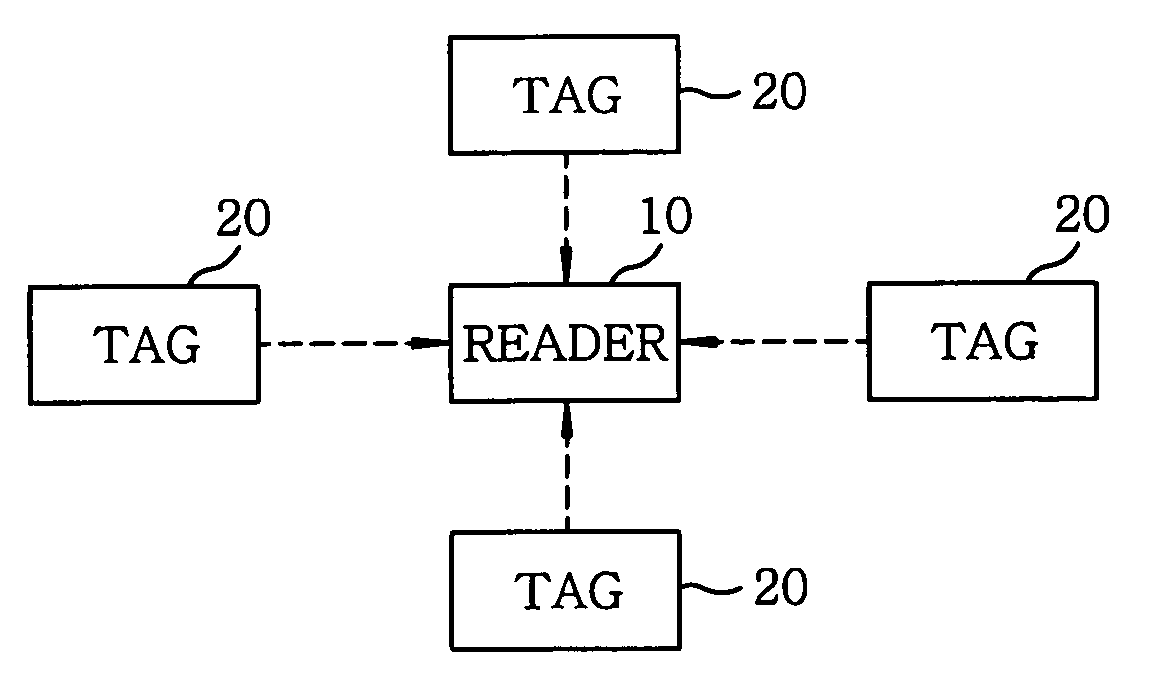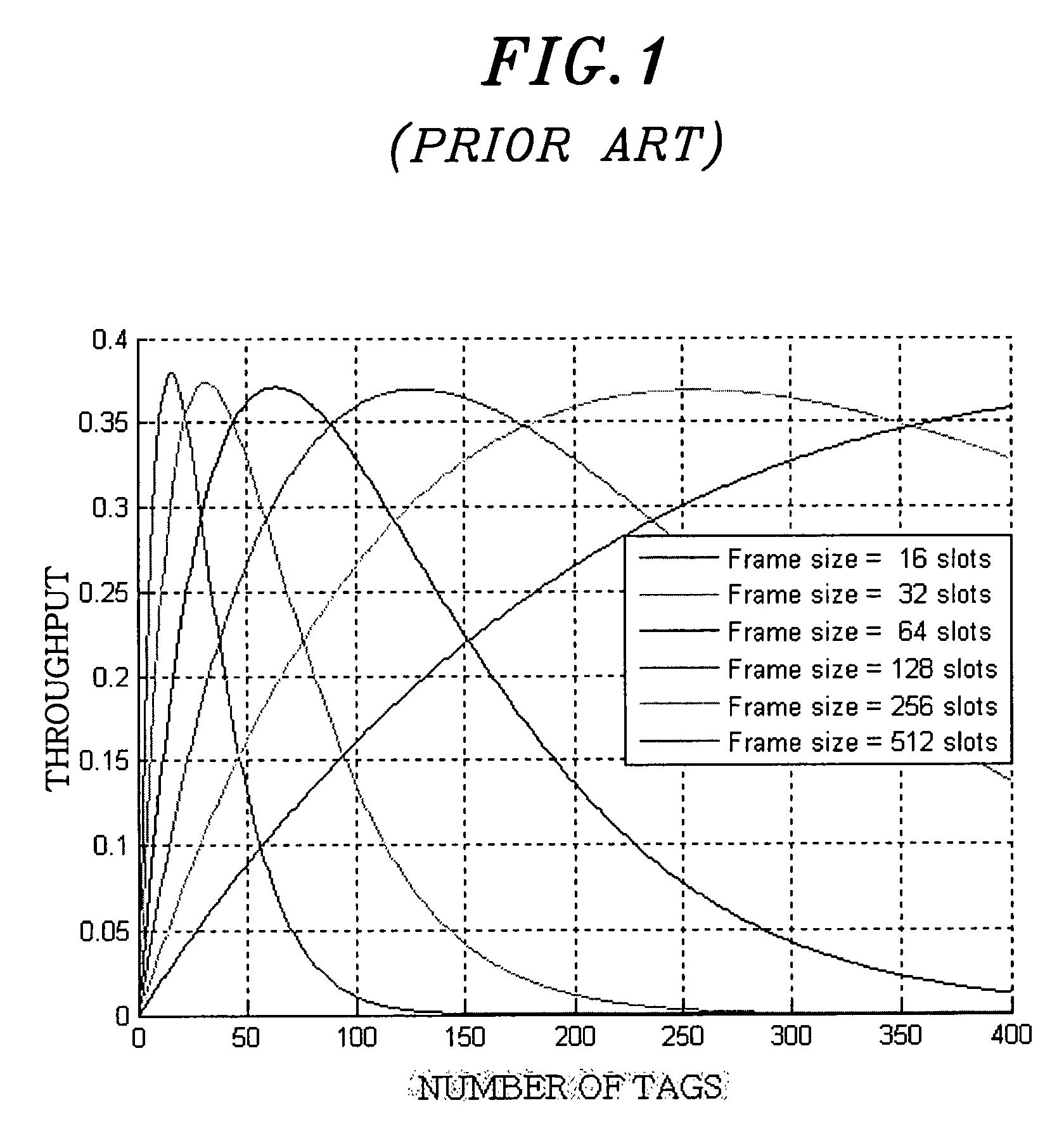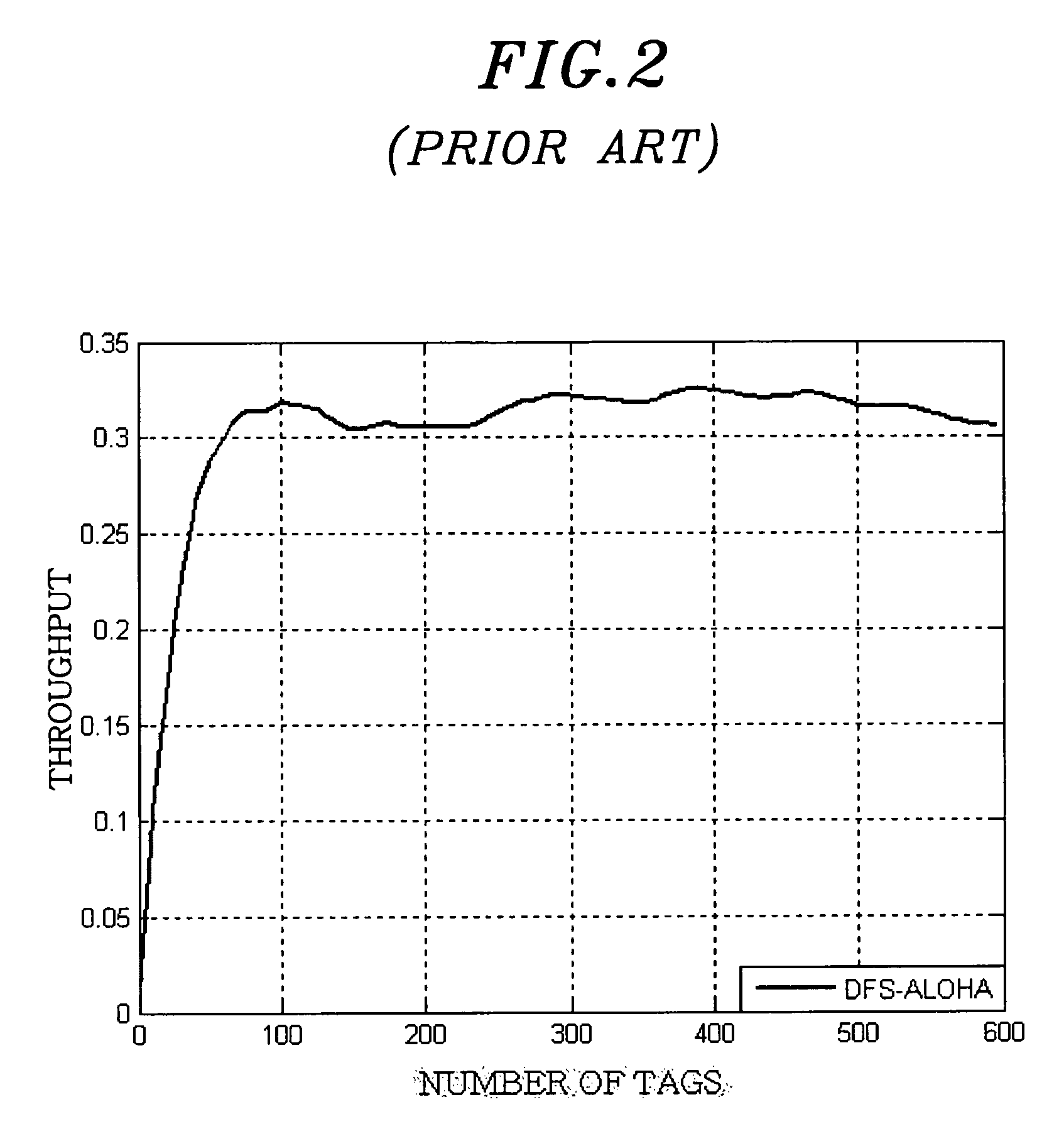Query tree based tag identification method in RFID systems
a tag identification and query tree technology, applied in the field of query tree based tag identification method in rfid system, can solve the problems of increasing equipment cost, increasing memory size and battery installation cost when applying usable anti-collision protocols, and complex calculation, etc., and achieve the effect of fast tag identification
- Summary
- Abstract
- Description
- Claims
- Application Information
AI Technical Summary
Problems solved by technology
Method used
Image
Examples
Embodiment Construction
[0039]Hereinafter, preferred embodiments of the present invention will be described in detail with reference to the accompanying drawings so that they can be readily implemented by those skilled in the art.
[0040]FIG. 3 shows a schematic diagram of a RFID system suitable for performing fast tag identification through RFID tag anti-collision protocols in accordance with the present invention.
[0041]The RFID system described in FIG. 3 includes a reader 10 and one or more tags 20. The RFID is a technology capable of reading information of tags through RF waves after attaching the tags to objects. This technology can be applied to various fields such as distribution management, security, circulation and the like. By changing an existing contact barcode into RF, it cannot only read the information faster than the barcode but also has the advantage that the restriction of the operation range is alleviated. Further, it takes an additional advantage of intelligentization of objects.
[0042]In u...
PUM
 Login to view more
Login to view more Abstract
Description
Claims
Application Information
 Login to view more
Login to view more - R&D Engineer
- R&D Manager
- IP Professional
- Industry Leading Data Capabilities
- Powerful AI technology
- Patent DNA Extraction
Browse by: Latest US Patents, China's latest patents, Technical Efficacy Thesaurus, Application Domain, Technology Topic.
© 2024 PatSnap. All rights reserved.Legal|Privacy policy|Modern Slavery Act Transparency Statement|Sitemap



